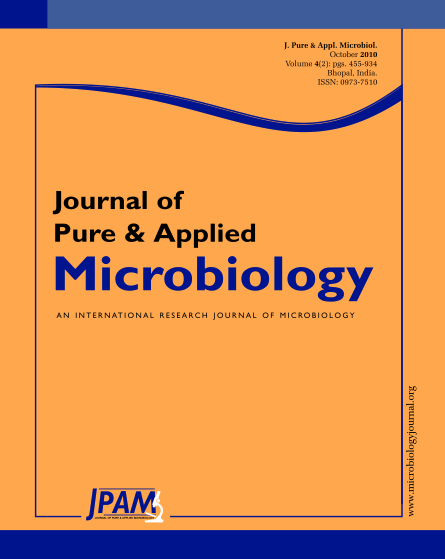Freshwater cyanobacteria from local rice- fields of Mayurbhanj district of Orissa, India were studied for their antimicrobial potentials. Crude metabolites were extracted using three organic solvents of different polarity viz. chloroform, methanol and ethyl acetate. The metabolites were tested against some clinically significant microorganisms. The results showed that nine freshwater cyanobacteria (Oscillatoria sp., Oscillatoria curviceps, Phormidium sp., Aphanothece microscopica, Nostoc piscinale, Anabaena variabilis, Anabaena spiroides, Cylindrospermum muscicola and Microcystis sp.) were active in inhibiting the test pathogens with chloroform extracts displaying considerable antimicrobial activity. Among the strains, three freshwater cyanobacterial species (Phormidium sp., Aphanothece microscopica, Cylindrospermum muscicola) effectively inhibits at least one of the test pathogens indicating that these cyanobacteria might have active antimicrobial metabolites. Minimum inhibitory concentration (MIC) was carried out in selected cyanobacterial strains that showed good zone of inhibition against the test pathogens during agar cup diffusion assay. MIC ranged from 500 µg/ml to 250 µg/ml with highest values recorded against E. coli and S. aureus and lowest value against B. subtilis. The findings revealed that the crude extract showed higher antimicrobial activity against Gram positive and Gram negative bacteria than pathogenic fungi. This study illustrates that cyanobacteria occurring in rice fields could be a potent source of antimicrobial agents.
Crude metabolites, Antimicrobial activity, Rice-fields, Cyanobacteria
© The Author(s) 2010. Open Access. This article is distributed under the terms of the Creative Commons Attribution 4.0 International License which permits unrestricted use, sharing, distribution, and reproduction in any medium, provided you give appropriate credit to the original author(s) and the source, provide a link to the Creative Commons license, and indicate if changes were made.


